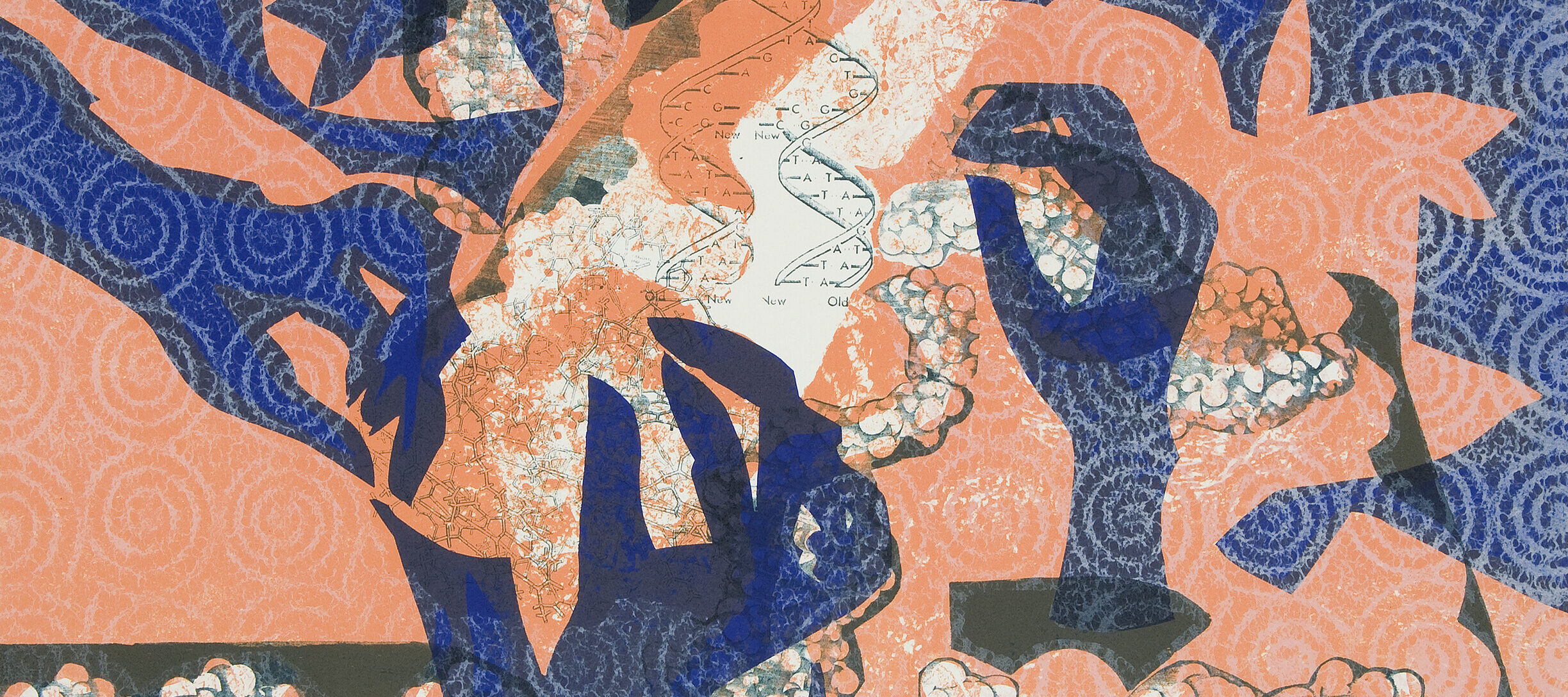The dynamic partnership between artist and printmaker is explored in the exhibition, Partners in Printmaking: Works from SOLO Impression. NMWA acquired more than 50 works for its permanent collection from the renowned New York print workshop SOLO Impression Inc. The prints represent the entire archive of works by women artists at SOLO Impression Inc. and are the product of a twenty-year collaboration between Judith Solodkin, the printshop’s founder, and some of the world’s most important contemporary women artists: Louise Bourgeois, Joyce Kozloff Ida Applebroog, Ellen Lanyon, Nancy Spero, Altoon Sultan and Judy Rifka, among others.
The prints were partly purchased by NMWA through its Members’ Acquisition Fund. SOLO Impression Inc. made a generous donation of additional works. In the printmaking process, the artist and printer become partners in creation. In the past, the process was seen as having two separate functions: the artist engaged in creative activities while the printmaker managed the mechanics of printmaking. This separation of mind (artist) from hand (printer) obscured the printer’s creative contribution in guiding the artist through the rigorous demands of the process. SOLO has always engaged in a collaborative approach, which makes it possible for the artist to produce the best possible print. The printer provides information about the process but also knows when to withhold opinions or seek alternative technical solutions.
The driving force behind SOLO, Judith Solodkin, mirrors the philosophy of the Tamarind Lithography Workshop, where she holds the distinction of being the first woman to become a master printer. Founded in 1960 by printmaker and painter June Wayne, Tamarind is an educational institution devoted to the art of collaborative lithography. A master printer there receives training developed out of a continuous tradition that began with the artisan-lithographer of nineteenth-century Europe.
Today, printmakers are more likely to be college graduates first trained as artists, as is the case with Solodkin. Tamarind instills in its printmakers deference to the artist’s perception and encourages inventive experimentation. It has also helped to elevate the status of the printer by adopting the printer’s chop, (a printer’s embossed logo) as a means of identifying the person responsible for assisting the artist to realize the print.
The chop mark for SOLO is a hand with the palm facing forward and a raised index finger. Blindstamped, or embossed, on the lower right-hand side of all SOLO prints, the finger points toward the image, serving both to signify that the art is primary and that the printer has made its execution possible. SOLO’s single raised digit also reinforces the name of the press, which derives from the first four letters of Solodkin’s name and symbolizes her singular endeavor.
Without having intentionally set out to work primarily with women, Solodkin believes that it is the quality of the work and the collaborations that have led to her continuing commitment to some of the world’s best contemporary women artists. According to Solodkin, “Success is achieved when the artist’s image merges with the chosen technique in a seamless union.” Solodkin has achieved success not only in collaboration with artists and in the founding of a well-known printmaking studio but also in a partnership that has enhanced the permanent collection of the National Museum of Women in the Arts.

Installation image of Partners in Printmaking: Works from SOLO Impression
The Artist,
Lynda Benglis
Lynda Benglis first garnered art-world attention for her poured latex sculptures, which stood in marked contrast to the hard-edged sculpture of male-dominated Minimalism.
The Artist,
Petah Coyne
Petah Coyne evokes intensely personal associations in sculptures made of incredibly varied materials.
The Artist,
Louise Bourgeois
Louise Bourgeois is considered one of the most inventive and influential sculptors of the 20th century for her use of unconventional materials and allusive psychological content.
The Artist,
Lesley Dill
Lesley Dill, a painter, printmaker, sculptor, photographer, and performance artist with an abiding interest in language, typically works with natural materials.
The Artist,
Alice Neel
In her portraits, Alice Neel sought to reveal the inner lives of her sitters, who included relatives, neighbors, and art-world celebrities.
